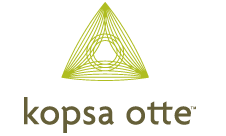The following is an article that I co-authored that was published in the February 2007 issue of Salon Today. There are some good lessons here that many people have learned the hard way.
Larry Kopsa CPA
Larry Kopsa CPA
“I never have any money.” “My financial statements show I’m making a good profit, but I never have any cash in the bank.” “At the end of the year I had $50,000 in the bank, but now I’m overdrawn.”
These are just a few of the cash flow concerns that Larry Kopsa, CPA hears from salon owners on a daily basis. “Many believe cash flow is just an issue for small salons, but it doesn’t discriminate,” says Kopsa, one of the founders of Kopsa Otte CPA, an accounting firm specializing in the salon industry. “Cash flow can be a problem for both large and small, new and old, and high-ticket and low-ticket operations.”
Lack of cash flow drains both the owner and the entire salon, and can be a devastating problem, both financially and emotionally. “When an owner is working so hard but there’s never any cash flow in the bank, it deflates his enthusiasm. It’s a heavy weight that just won’t go away,” explains Kopsa.
The first step in solving any cash flow problem is to find the cause or causes, then work out a solution. Often, the solution requires planning, energy, patience and the willingness to change. Some of the most likely causes of a salon’s cash-flow crunch include:
Overstocking Inventory
Being able to have the correct amount of inventory on hand takes experience and planning. Expanding into too many lines, purchasing more than you need and not having proper inventory control and reorder points can tie up a large percentage of a salon’s cash.
“Recently I talked to a salon that decided to put in a high-end make-up line. Although in the long run this looked like it would be a profitable move, right now their hands are tied – all of the cash is tied up in inventory,” says Kopsa.
Gift Certificates
Although there are many benefits to gift certificate sales, they can give you a false sense of available cash. This is especially true with year-end gift certificate sales. Those salons that have high gift certificate sales in December see a swell in their cash, but they often don’t realize that they are going to eventually have to pay for the products, back bar, producer pay and payroll taxes associated with those services.
“Given that most profitable salons work on a gross profit margin (not net profit) of 35 to 40 percent – then $30,000 in gift certificates in December will have a cost of $12,000 to $20,000 in subsequent months,” explains Kopsa.
Improper Financing
“At times, we see salons that try to pay off debt too quickly,” says Kopsa. “Although being out of debt is a worthy goal, there are times that we need to allow debt to work for us. Doing a major renovation or purchasing equipment and trying to pay off over three years versus seven can really squeeze cash flow.”
Income Taxes
Many salons don’t plan for a reserve for income taxes, then April 15 comes along and they are behind the eight ball. “By then, it’s too late to get out of the cash-crunch hole,” says Kopsa. “The prior year taxes are due and you should already be making estimated tax payment for the current year. By not planning in advance, your taxes can double up on you, leaving you in a difficult situation.”
Rainy Days
Walkouts, pregnancies, accidents, unexpected renovations – as anyone in the salon business will tell you, there will always be things that come up. “Salon’s with good cash flow management understand that setbacks are inevitable and they prepare by setting some money aside for the unexpected.”
Beyond Your Means
“Let’s face it, there are just some people who live beyond the income of the salon,” says Kopsa. “In the end, it’s the business that will pay the price.”
Overestimating Paybacks
Kopsa has seen many salons run into cash flow problems by overestimating the payback on an expenditure. “An example would be advertising. I’ve seen salons spend enormous amounts on advertising thinking that new business will be beating down the door. Another example is expansions – they think those extra chairs will magically fill up.” Overestimating what an expenditure will pay you back can seriously burn through cash.
These are just a few of the cash culprits, all of which require a different solution. But if you examine the problems listed above, you can see they all could have been avoided by having a solid budget.
“Salons with an operating budget know at the beginning of the year exactly what the year will bring as long as they hit their numbers,” says Kopsa. “A budget will tell the owner what they can and can’t do – it’s a goal sheet, a roadmap to success.”
Comparing the results of the operation to the budget each month helps an owner keep an eye on his or her cash availability. If you are ahead of budget, you have the opportunity to spend more. If you are behind, you know you have to make changes.


